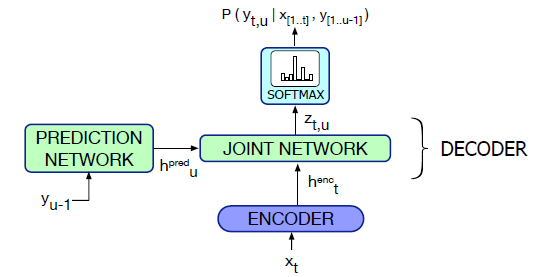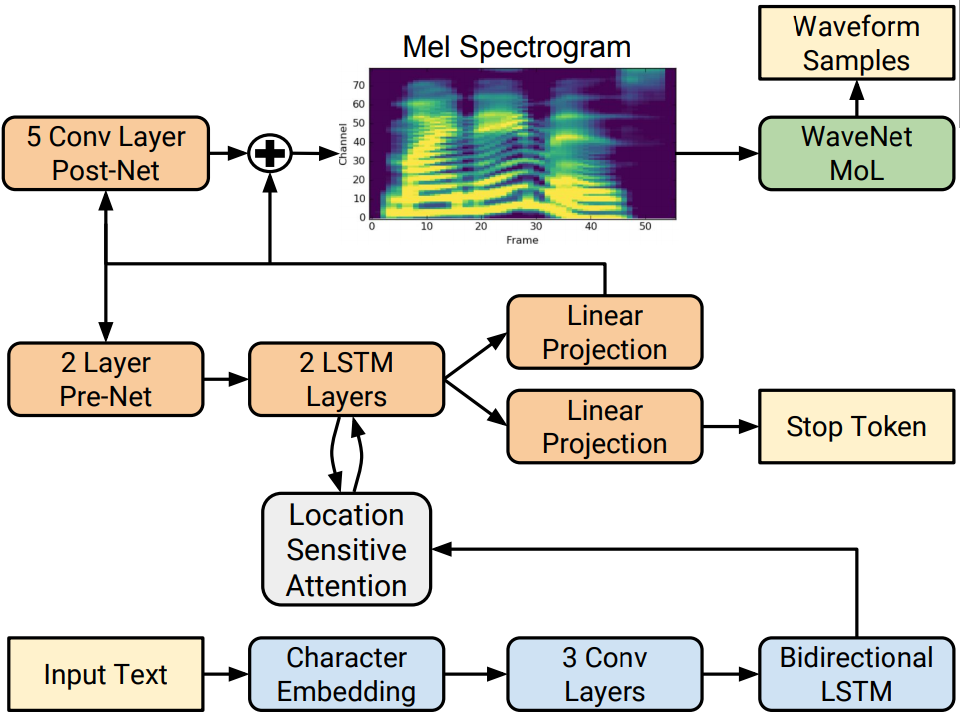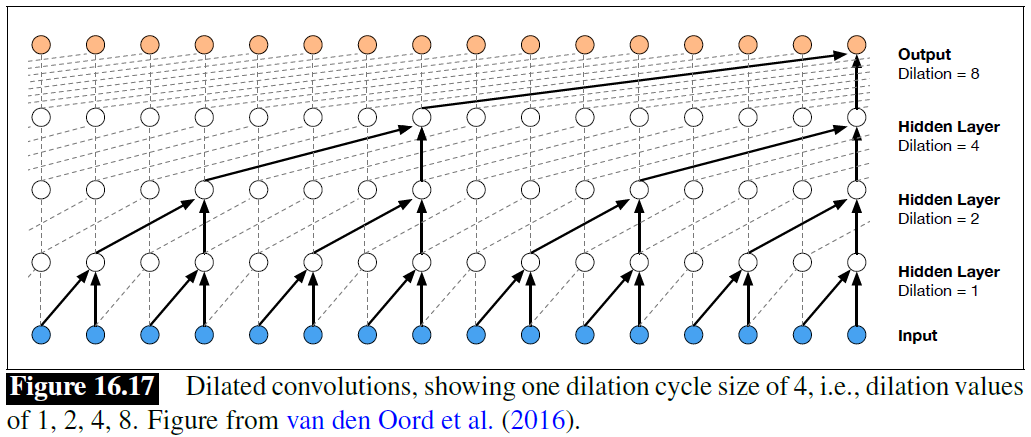Models
Listen, Attend and Spell (LAS)

- Attention-based Encoder Decoder (AED)
- The input is a sequence of acoustic feature vectors , one vector per 10 ms frame
- The output can be letters or wordpieces
- The encoder-decoder architecture is appropriate when input and output sequences have stark length differences: very long acoustic feature sequences mapping to much shorter sequences of letters or words
- Encoder-decoder architecture for speech need to have a compression stage that shortens the acoustic feature sequence before the encoder stage; alternatively use CTC loss function
- e.g. Low frame rate algorithm: for time , concatenate the acoustic feature vector with the prior two vectors
Adding a LM
- Since an encoder-decoder model is essentially a conditional language model, they implicitly learn a language model for the output domain of letters from their training data
- Speech-text datasets are much smaller than pure text datasets
- We can usually improve a model at least slightly by incorporating a very large language model
Beam Search
- To get a final beam of hypothesized sentences, a.k.a n-best list
- The scoring is done by interpolating the LM score and encoder-decoder score, with a weight tune on the held-out set
- Since most models prefer shorter sentences, normalize the probability by the number of characters in the hypothesis
Connectionist Temporal Classification (CTC)

- The intuition of CTC is to output a single character for every frame of the input, so that the output is the same length as the input
- And then to apply a collapsing function that combines sequences of identical letters, resulting in a shorter sequence
- The CTC collapsing function is many-to-one; lots of different alignments map to the same output string
Inference
- The most probable output sequence is the one that has, not the single best CTC alignment, but the highest sum over the probability of all its possible alignments:
- Because of the strong conditional independence assumption (given the input, the output at time is independent of the output at time ), CTC does not implicitly learn a language model
- Essential using CTC to interpolate a language model
Training
The loss for an entire dataset is the sum of the negative log-likelihoods of the correct output for each input :
RNN-Transducer (RNN-T)

- Because of the strong independence assumption in CTC, recognizers based on CTC don't achieve as high an accuracy as the attention-based encoder-decoder recognizers
- CTC recognizers have the advantage of streaming, recognizing words on-line rather than waiting until the end of the sentence to recognize them
- Removes the conditional independence assumtpion
- Two main components: a CTC acoustic model, and a separate language model component called the predictor that conditions on the output token history
- At each time step , the CTC encoder outputs a hidden state given the input
- The language model predictor takes as input the previous output token, outputting a hidden state
- The two hidden states are passed through the joint network, whose output is then passed through a softmax to predict the next character
Tacotron2

- Extends the earlier Tacotron architecture and the Wavenet vocoder
- An encoder-decoder maps from graphemes to mel spectograms, followed by a vocoder that maps to wavefiles
- Location-based attention, in which the computation of the values makes use of the values from the prior time-state
- Autoregressively predict one 80-dimensional log-mel filterbank vector frame (50 ms, with a 12.5 ms stride) at each step
- Stop token prediction, decision about whether to stop producing output
- Trained on gold log-mel filterbank features, using teacher forcing
WaveNet
- An autoregressive network
- Takes spectograms as input and produces output represented as sequences of 8-bit -law audio samples
- This means that we can predict the value of each sample with a simple 256-way categorical classifier
The probability of a waveform, a sequence of 8-bit mu-law values , given an intermediate input mel spectogram is computed as:
- The probability distribution is modeled by dilated convolution, a subtype of causal convolutional layer
- Dilated convolutions allow the vocoder to grow the receptive field exponentially with depth
